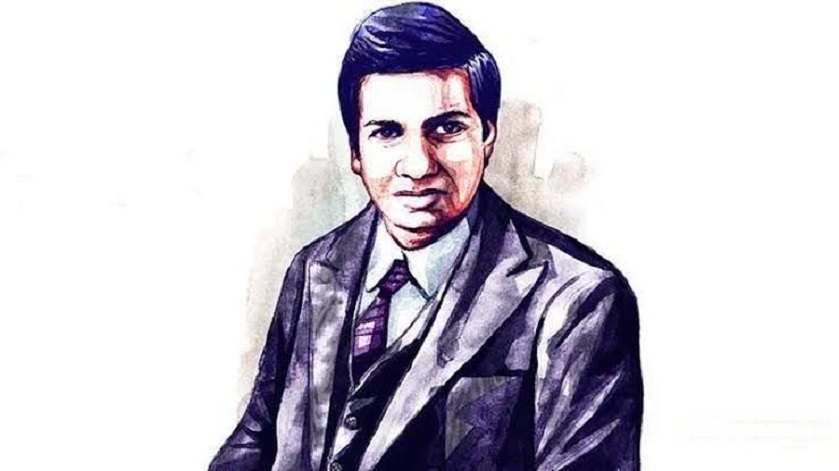
By Firdous Ahmad Mala
THE national mathematics day has been celebrated every year since its inception a decade ago in 2012. It is now in double figures. The day is celebrated to pay homage to one of the finest, yet, arguably, the most “unrefined” Indian mathematician, Srinivasa Ramanujan, the one who is now popularly known as the man who knew infinity owing to the movie with the same title that made its first appearance half a dozen years back in 2015.
Ramanujan was born in 1887 at Erode in Madras and had the strongest and the strangest liking, which could be termed as obsession, for numbers and mathematics. The saga of how he made it to being elected as a Fellow of the Royal Society is inspiring, on one hand, and enervating, on the other. He was unrefined, unpolished and far from being properly educated. Yet he was one of his kind, unbelievable and far from the prosaic stuff.
Ramanujan’s collaboration with G. H. Hardy left a lasting influence on both. When Ramanujan died at the age of thirty three, Hardy said something that appears indicative of Hardy’s dissatisfaction and displeasure at being departed from Ramanujan. He said, “No mathematician should ever allow him to forget that mathematics, more than any other art or science, is a young man’s game. Galois died at twenty-one, Abel at twenty-seven, Ramanujan at thirty-three, Riemann at forty. There have been men who have done great work later; [but] I do not know of a single instance of a major mathematical advance initiated by a man past fifty. A mathematician may still be competent enough at sixty, but it is useless to expect him to have original ideas.” It was nothing less than a vent to the frustration Hardy experienced at the untimely demise of Ramanujan.
Ramanujan’s early marriage, his lack of being well-versed with the formal education and his being butter-fingered when it came to proofs could have only added to his woes, however, none of these became a deterrent to his untiring pursuit for mathematics, thanks to Hardy. His work on elliptic functions and partitions brought to light his acumen and the kind of intuition he possessed. If there was one thing that Ramanujan had in abundance when there was a paucity of the same in others, it was his intuition.
Ramanujan’s notebooks are another wonder. In his book, ‘The Discovery of Ramanujan’s Lost Notebook’, Georg Andrews wrote that he was already an advanced researcher in fields, such as mock theta functions and hypergeometric series. Ramanujan stood much ahead of his time.
Having mastered S. L. Loney’s famous book on trigonometry at the age of thirteen was a feat that speaks for itself. This book alongside the book titled, A Synopsis of Elementary Results in Pure and Applied Mathematics culminated and resulted in giving a meaningful and impactful impetus to Ramanujan’s life.
Some authors have likened his intimacy with numbers to that of Milton’s mastery over words. His famous response to Hardy about the latter’s remark on 1729 being a number with not very interesting properties is indicative of how closely and deeply he was in love with numbers and mathematics. He is reported to have remarked that 1729 is the smallest number capable of being written as the sum of two cubes in two different ways.
There is a lot more to know about this pure mathematician, Ramanujan. ‘The man who knew infinity, the book and the movie, besides Hardy’s masterpiece, ‘A mathematician’s apology’ are some of the sources to know more about Ramanujan.
The revolutionary, inspiring and somewhat mysterious life of Ramanujan came to a close when he was merely 33 in 1921.
Now that we are celebrating the national mathematics day, we must not confine it to mere celebrations and commemoration. Schools, colleges and universities need to inculcate in the students the kind of love Ramanujan had for mathematics. It would be no exaggeration to declare that knowledge of mathematics is an indicator of how progressed and advanced a society is. Ramanujan has left us a very rich legacy, the legacy of originality and that of unconditional love for research and discoveries. The legacy is to be capitalized upon and continued. An evident and prominent lesson we can derive from Ramanujan’s story is that of singleness of purpose.
The author is an Assistant professor Government Degree College Sopore
Follow this link to join our WhatsApp group: Join Now
Be Part of Quality Journalism |
Quality journalism takes a lot of time, money and hard work to produce and despite all the hardships we still do it. Our reporters and editors are working overtime in Kashmir and beyond to cover what you care about, break big stories, and expose injustices that can change lives. Today more people are reading Kashmir Observer than ever, but only a handful are paying while advertising revenues are falling fast. |
| ACT NOW |
| MONTHLY | Rs 100 | |
| YEARLY | Rs 1000 | |
| LIFETIME | Rs 10000 | |










